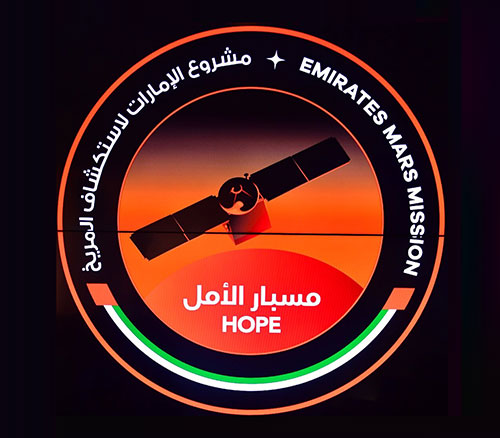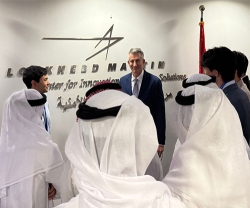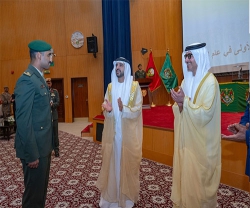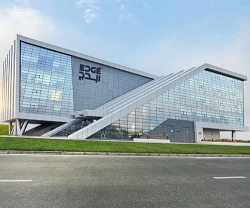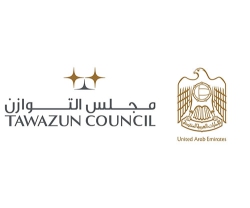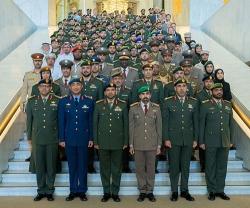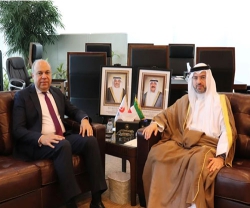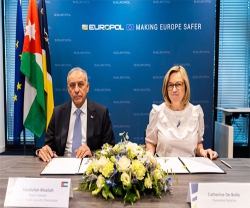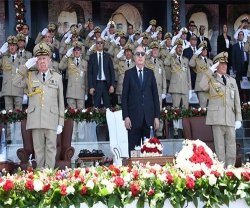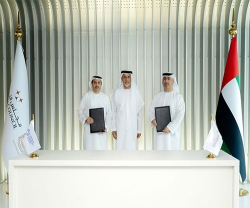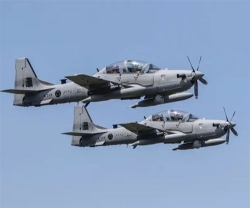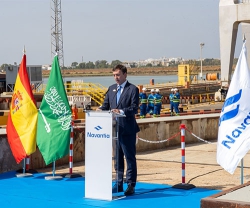His Highness Sheikh Mohammed bin Rashid Al Maktoum, UAE Vice President, Prime Minister and Ruler of Dubai, announced that the Hope Probe, the Arab world’s first mission to another planet, travelled fifth of its journey to the Red Planet one month after its historic lift-off from Japan, Emirates news agency WAM reported.
Sheikh Mohammed bin Rashid Al Maktoum shared two images from the Hope Probe’s star-tracking camera and tweeted, “The Hope Probe is officially 100 million km into its journey to the Red Planet. Mars, as demonstrated in the image captured by the Probe’s Star Tracker, is ahead of us, leaving Saturn and Jupiter behind. The Hope Probe is expected to arrive to Mars in February 2021.”
“In less than 170 days, we will celebrate the probe’s entry into the Red Planet’s orbit. It will be a path-breaking achievement in the history of global Mars missions,” he added.
The Hope Probe has so far travelled 20% of its 493-million-kilometer journey to the Red Planet since its lift-off from Japan’s Tanegashima Space Center on July 20, 2020.
The 100-million-km milestone comes after the probe’s successful completion of its first trajectory correction man oeuvre TCMs that marked the firing of its six Delta-V thrusters. The probe will perform a number of further trajectory control man oeuvres, to reach its scheduled Mars Orbit Insertion, MOI, less than 170 days on February 2021, coinciding with the UAE’s Golden Jubilee celebrations.
Currently travelling at a speed ranging between 110,400 km/h to 122,400km/h, the Hope Probe has already travelled fifth of its journey, equivalent to 130 trips from the Earth to the moon. The probe will automatically reduce its speed to 18,000 km/h as it gets closer to Mars.
This phase of the probe’s journey marks the testing of the three advanced science instruments mounted on the probe that work simultaneously to capture complete data from Mars. The first is an infrared spectrometer to measure the lower atmosphere and analyze the temperature structure. The second is a high-resolution exploration imager that will provide information about ozone levels and depth of water ice in the atmosphere, while the third, an ultraviolet spectrometer, is set to measure oxygen and hydrogen levels.
The Hope Probe will provide the first truly global picture of the Martian atmosphere as it orbits the Red Planet throughout one full Martian year of 687 days.
With the help of the mounted three devices, the probe will provide answers to long-standing questions about the Red Planet as it will be the first to study the Martian climate throughout daily and seasonal cycles. It will observe the weather phenomena in Mars such as the massive famous dust storms that have been known to engulf the Red Planet, as compared to the short and localized dust storms on earth.
The Mars Hope Probe will examine the interaction between the upper and lower layers of the Martian atmosphere and causes of the Red Planet’s surface corrosion, as well as study why Mars is losing its upper atmosphere.
Exploring connections between today’s Martian weather and the ancient climate of the Red Planet will give deeper insights into the past and future of Earth and the potential of life on Mars and other distant planets.
The Emirates Mars Mission team, which includes 200 Emirati engineers and specialists, had built the orbiter in six years, at half the duration and cost of conventional missions. The Mars mission is part of the UAE’s contribution to global space exploration efforts and adds a new dimension to human knowledge.
A team of Emirati experts are tracking the Mars orbiter’s journey at the ground station of the Mohammed bin Rashid Space Center. The team is supervising the probe’s control operations and receiving signals and data from the probe.
Once it enters the Red Planet’s orbit, the probe will send back more than 1,000 gigabytes of new Mars data to be shared with over 200 research centers for free across the world. The mission’s wider objective involves inspiring youth across the world to pursue science-based fields and spark their interest in technology, space engineering and advanced sciences as the main pillars of the future knowledge-based economy.
So far, the mission has attracted 60,000 students to join its diverse educational programs, developed 200 new technologies and helped publish 51 research papers and build 66 parts of the probe in the UAE.

